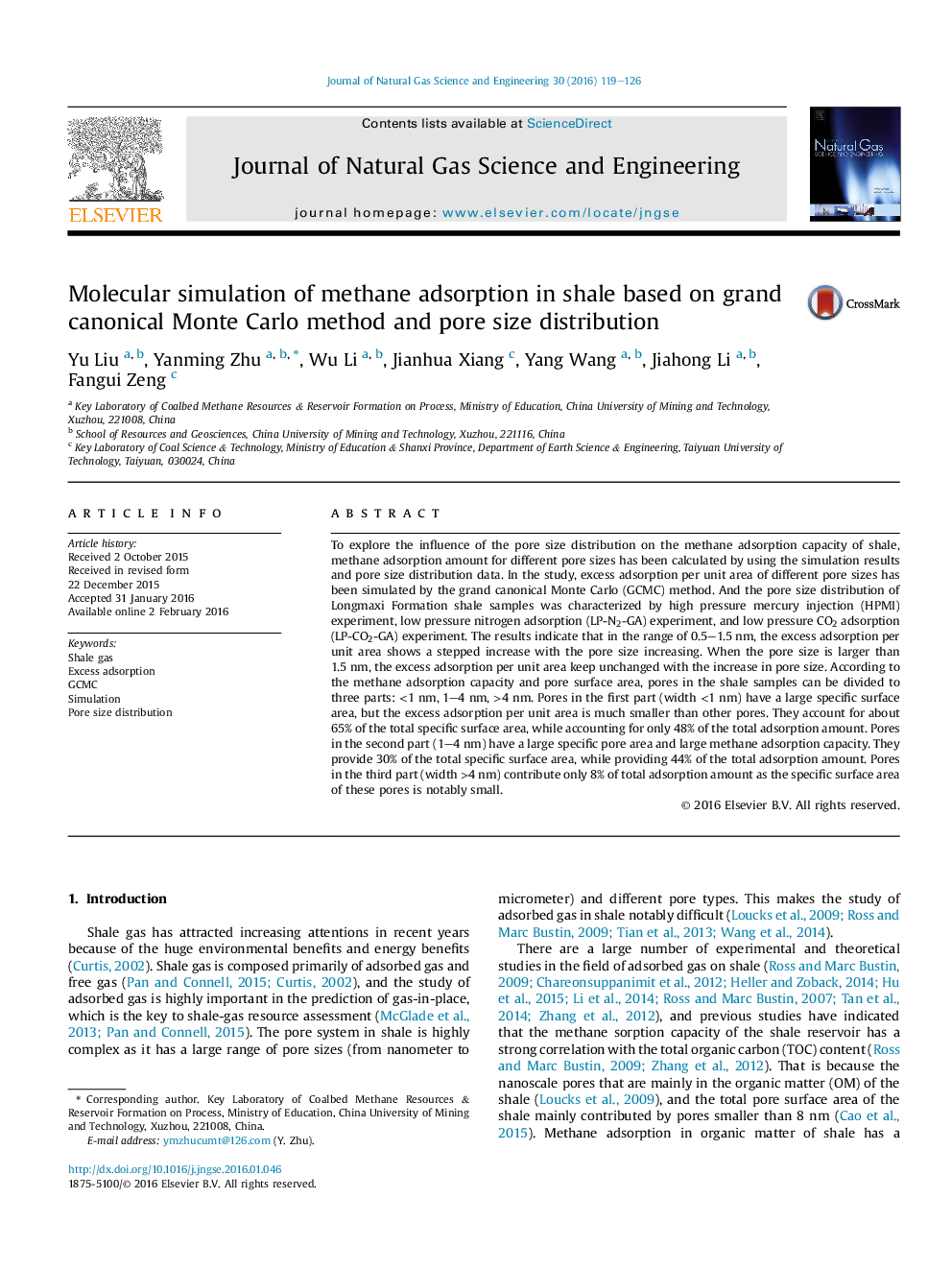| Article ID | Journal | Published Year | Pages | File Type |
|---|---|---|---|---|
| 1757156 | Journal of Natural Gas Science and Engineering | 2016 | 8 Pages |
•Methane adsorption distribution for different pore size was calculated.•Excess adsorption per unit area was simulated by GCMC method.•Pore size distribution was studied by HPMI, N2 and CO2 gas adsorption.
To explore the influence of the pore size distribution on the methane adsorption capacity of shale, methane adsorption amount for different pore sizes has been calculated by using the simulation results and pore size distribution data. In the study, excess adsorption per unit area of different pore sizes has been simulated by the grand canonical Monte Carlo (GCMC) method. And the pore size distribution of Longmaxi Formation shale samples was characterized by high pressure mercury injection (HPMI) experiment, low pressure nitrogen adsorption (LP-N2-GA) experiment, and low pressure CO2 adsorption (LP-CO2-GA) experiment. The results indicate that in the range of 0.5–1.5 nm, the excess adsorption per unit area shows a stepped increase with the pore size increasing. When the pore size is larger than 1.5 nm, the excess adsorption per unit area keep unchanged with the increase in pore size. According to the methane adsorption capacity and pore surface area, pores in the shale samples can be divided to three parts: <1 nm, 1–4 nm, >4 nm. Pores in the first part (width <1 nm) have a large specific surface area, but the excess adsorption per unit area is much smaller than other pores. They account for about 65% of the total specific surface area, while accounting for only 48% of the total adsorption amount. Pores in the second part (1–4 nm) have a large specific pore area and large methane adsorption capacity. They provide 30% of the total specific surface area, while providing 44% of the total adsorption amount. Pores in the third part (width >4 nm) contribute only 8% of total adsorption amount as the specific surface area of these pores is notably small.
